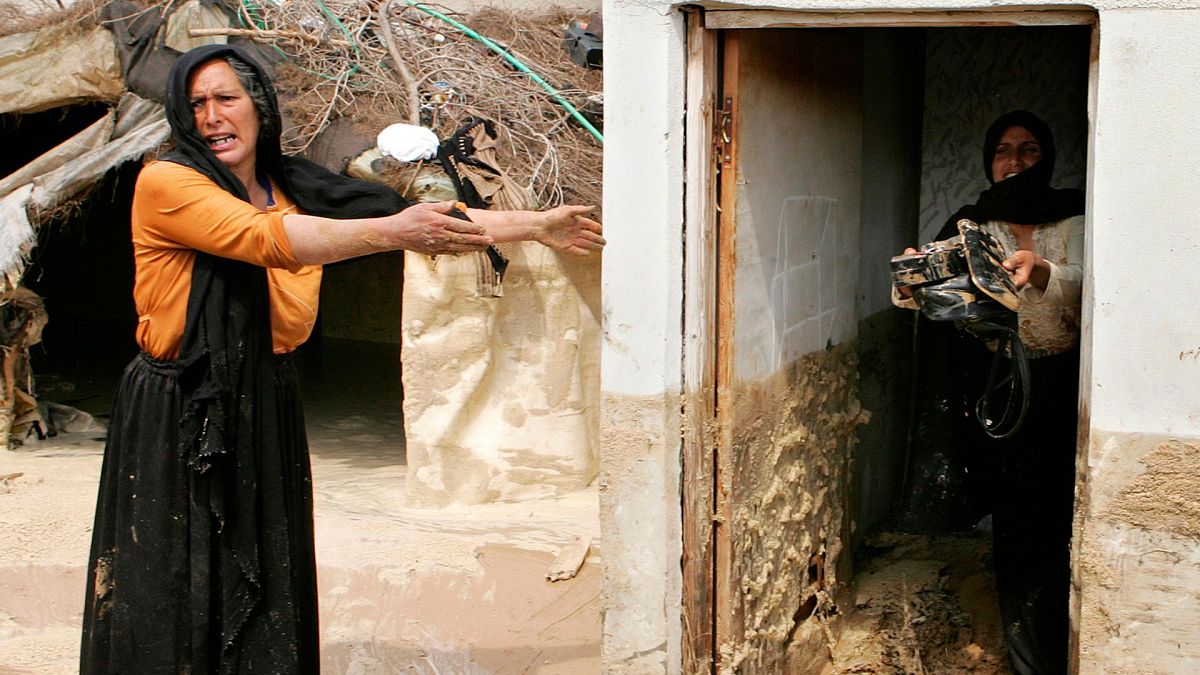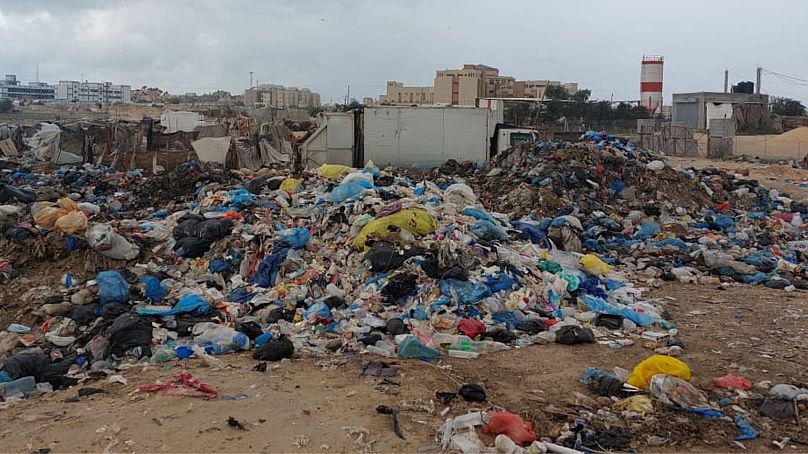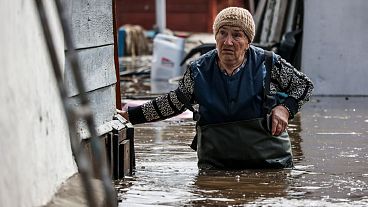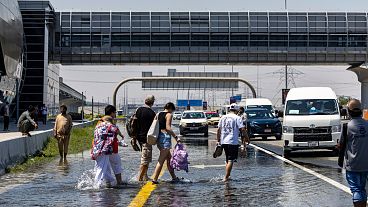Those living in Gaza are experiencing acute respiratory infections, diarrhoea, lice and scabies.
15 years ago, a 23-day war in Gaza left 17% of farmland “ruined with little to no feasibility of rejuvenation,” according to a UNDP fact-finding report.
Now, 70 days into the current war, experts warn that irreversible damage is being done to the environment of the narrow strip that is one of the world’s most populated regions.
Air pollution has spiked, water-borne illnesses are on the rise and wildlife is suffering.
In October this year, Human Rights Watch confirmed that Israel had dropped white phosphorus on Gaza and Lebanon. This chemical is known to have a severe and fatal impact on humans, animals, and the environment.
The highly toxic substance burns through human flesh and reignites. It damages soil, contaminates water sources, and poisons aquatic ecosystems, says Khaled El-Sayed, managing director of the Cairo-based Synerjies Center for International and Strategic Studies and advisor on sustainable development.
“Research indicates that the intense heat generated during the combustion [of bombs],” says El-Sayed, “could alter both the physical structure and chemical properties of the soil, thereby reducing fertility and elevating the likelihood of soil-borne diseases.”
Deep puddles of sewage surround homes
The area where Gazans can go to escape these horrors is becoming smaller and smaller by the day.
Khan Younis in southern Gaza was home to about 400,000 residents before the war. Now more than a million are crammed into just over 21 square miles.
58-year-old local Ahmed Al-Astal is grateful his family is still alive, after months of bombing that has killed more than 20,000 people to date. But deep puddles of sewage water surrounding his home have triggered a new set of fears.
“The lives of my grandchildren are at stake,” Al-Astal says.
Ahmed, 4, and Fatima, 2, face the short-term threat of drowning in this sea of contaminated water and the long-term threat of chronic illness.
“Ahmed has a respiratory infection and his sister has a rash all over her body, which doctors say is a symptom of skin disease acquired from this polluted environment,” Al-Astal says.
Since Hamas’ 7 October deadly attack on Israel which killed 1,200 people, Israel has limited fuel supplies entering the Strip, paralysing most utilities and services. The Khan Younis municipality has been unable to pump sewage out to the treatment stations outside the city. Sewage treatment stations do not work consistently because there’s no fuel to power their generators.
“Khan Younis is almost completely inundated with sewage water,” says Al-Astal, who, like thousands of others, was forced to move to Al-Mawasi, an 8.5 square kilometre sliver of land on Gaza’s coast, described as “smaller than London’s Heathrow airport.”
Bombs dropped on Gaza pollute soil and water supplies
The Geneva-based Euro-Med Human Rights Monitor says Israel has dropped 25,000 tonnes of bombs on Gaza, the equivalent of two nuclear bombs. This, experts say, severely pollutes the soil and air quality. They also contaminate Gaza’s scarce water resources, which a UN report described as largely unsuitable for human consumption back in 2020.
According to the head of the Palestinian Environmental Quality Authority (PEQA) Nasreen Tamimi, the environmental impact of the war on Gaza is “catastrophic”, adding that a comprehensive environmental field assessment would show that the “damage exceeds all predictions”.
“The martyrs' bodies under the rubble, hazardous medical waste, the shutdown of treatment and desalination plants have all contributed to the current crisis,” Tamimi says, echoing UN warnings of a looming public health disaster. The World Health Organization has reported a sharp rise in acute respiratory infections, diarrhea, lice, scabies and other fast-spreading diseases.
Makeshift landfills are overflowing
Omar Matar, director of the Health and Environment Department in Khan Younis Municipality, says the influx of people to the city has created a rubbish crisis.
“Over one million now live in the same space. Solid garbage produced per day increased from 150 tons to over 450 tons. With limited resources, the municipality could not handle this increased volume, especially because trucks, excavators and fuel supplies are scarce,” says Matar.
The municipality can only move garbage three times a week, not daily as was the case before the war, he adds.
Even after collection, Matar says that the garbage was dumped in a temporary landfill set up near a residential area west of Khan Younis after Israel bombed the main landfill in the Fakhari area east of Khan Younis earlier this month.
This, he says, causes environmental and health risks due to the foul odours, insects, rodents, and pollutants.
Furthermore, agricultural lands housing perennial trees like olives and citrus fruits, or field crops like vegetables, have been subjected to extensive and unprecedented destruction.
In a report issued last month, Lawfare, a non-profit multimedia publication dedicated to providing non-partisan analysis on legal and policy issues, said “the legally proportionate collateral damage by lethal weapons used in civilian populated areas would be thoroughly immoral,” adding that the IDF’s airstrikes “can be considered as war crimes.”
Ahmed Al-Astal's 23-year-old son, Mohammed, suffers from kidney failure, requiring dialysis treatment three times a week.
“Because of the unhealthy environment, little access to clean water and gunpowder contaminating the air, his health has sharply declined,” he says.
This story was produced in collaboration with Egab.




